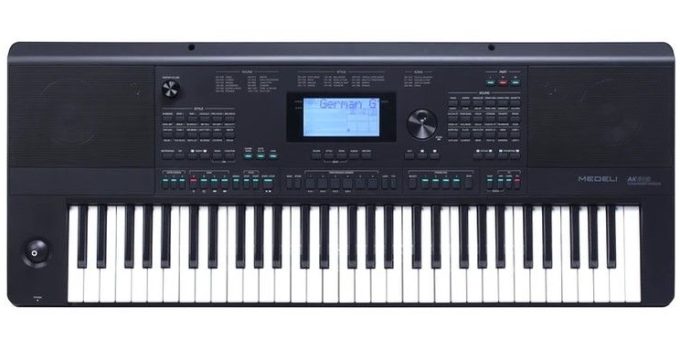Do you think about buying a digital piano? It’s not an easy decision to make. Lucas, our guest writer, has seven tips for you to consider when purchasing a digital piano.
Before you make a purchase, it’s always a good idea to make a checklist of sorts and determine what you’re looking for to match your needs and experience.
Are you looking for a full-fledged digital piano or a simple 61-key keyboard? Are you looking for hundreds of sounds or will you only use piano tones 95% of the time? Do you need something that is portable or does it look like an acoustic guitar?
These are the questions you need to ask before you go out and look at particular models.
This guide will help you choose the best digital piano for you. This list is by no means complete, but it will give you an idea about what to consider when spending your hard-earned cash.
- Sound
Although this may seem obvious, you should pay attention to the sound quality of your digital piano. You should pay close attention to the internal sound library and speakers.
Your digital piano’s speakers will be the main sound output. You will most likely rely on them when you play. It is important to make sure that the speakers are of good quality and loud enough to meet your needs.
While headphones are an option, they are not essential if you are going to be performing in front of your family and friends.
Many digital pianos come with many different sounds. These sounds aren’t limited to piano sounds. Many digital pianos have hundreds, if not thousands, of sounds, including organs, strings and clavinets. Many digital pianos have sound effects such as rain, thunder, and applause.
Although the main focus is on piano sounds, you can also use other instruments sounds to spice up your performance or explore different genres.
Quick fact: Entry-level keyboards, and arrangers, tend to have more built-in sounds than digital pianos. However, these sounds are often lacking in quality and realism, especially when compared to a high-quality Keyboard Piano. Don’t base your decision on how many sounds you have. A digital piano that has fewer sounds might be of better quality.
- MIDI Connectivity
Music-making has made MIDI an integral part of our lives. It has opened doors and provided opportunities previously unimagined. If you are looking to create and compose music then a digital piano with MIDI connectivity is a good choice. This allows you to connect to your Digital Audio Workstation, (DAW), of choice. You can then record yourself playing and make use of thousands upon thousands of plug-ins.
MIDI connectivity is a key feature for me as a music producer. It is one of my top considerations when shopping for a digital piano. Plug-ins are a great way to unleash your creativity. You can use millions of high quality sounds. Your digital piano can be used as a MIDI controller to link keys to a drum machine. This allows you to create drum beats and loops.
Nowadays, most digital keyboards and pianos have USB MIDI connectivity. It’s a good idea, however, to double-check as some models don’t have this option.
- Polyphony
Another term that you will come across when choosing a digital piano is polyphony. The term polyphony simply refers to the maximum number of notes that you can play simultaneously without having to cut off any notes too early.
You want to be free to express yourself, without having certain notes cut off too early. You need to make sure your digital piano has enough polyphony to enable you to express yourself.
You should be able to play any piece as long as you know at least 64 notes. Many keyboards at entry-level have a lower number of polyphony, which is enough for beginners.
This characteristic is not something I would stress over unless you plan on layering multiple sounds together or playing along with backing tracks.
- Keyboard
The keyboard of a digital piano is a major factor in your decision to purchase it. It should have a solid build and feel natural to the touch. This criteria is dependent on many factors including the key action mechanism of your keyboard.
Digital pianos usually come with a fully-weighted, hammer action keyboard. This mimics an actual acoustic instrument. Graded keys mean that the keys in the lower registers will feel slightly heavier, and then gradually become lighter as you move higher up the keyboard.
There are many weighted keyboards, so it is important to try out as many as possible.
These keyboards are cheaper and portable. These keyboards often have fewer than 88 keys, which is the same as acoustic pianists. They don’t attempt to duplicate the feeling of an acoustic instrument. The keys are usually unweighted or partially weighted. This means that the keyboard feels lighter than an acoustic Keyboard Piano NZ.
- Portability
You may choose a lighter option depending on the purpose of your digital piano. If you are a gigging musician who plans to carry your digital piano from show-to-show, you might choose a small, lightweight digital piano.
You may want to avoid a cabinet-style digital piano if this is the case. These are difficult to assemble and disassemble, and can be quite heavy.
The Yamaha YDP164 is a classic example of an intermediate digital piano. It’s a popular choice for home-based musicians.
The Roland RD2000 is a high-end 88-key digital stage keyboard that’s ideal for gigging musicians and studio use.
- Features
No matter what your budget is, you want the best bang for your buck when buying the instrument you choose. This means that you need to be attentive to the features so that you can determine if the investment is worthwhile and if they are right for you.
For instance, musicians who play live will need to be able switch between sounds quickly while on stage. A beginner player will need a ‘lesson mode option to improve their skills.
You should also check whether you have a recording or playback option. This is useful if you need to hear your compositions again or track your progress. It is also worth checking if the digital piano you choose can be connected with apps, or if it comes with any companion apps.
The Casio CTK-2550, for example, is geared towards beginners and features such as the Lesson Mode/Lesson Lite feature.
The Yamaha DGX600 is a full-fledged digital piano that offers a variety of arranger functions, including a 5-track MIDI recordinger and hundreds of songs and rhythms.
- Accessory
A digital piano can be quite expensive so it is worth looking into options that include several extras. Many music stores offer “bundles” for digital pianos. We are referring to the items that come with the purchase.
Many digital pianos include sustain pedals with their purchase. This saves money as you don’t have to purchase another sustain pedal.
Some models come with built-in piano stands, while others have 3-pedal boards that look just like an acoustic.
The Casio PX-870 digital piano is a great example of a cabinet-style digital piano. It includes both a piano stand and a 3-pedalbar.
Conclusion
There are many variables that influence the choices we make and the options that we choose. Two musicians could pick the exact same digital piano but have different reasons.
The digital piano you choose will also depend on your personal reasons. These include your budget, brand preference, experience, goals, and so forth.
This guide should have helped you to better understand the world of digital pianos and help you find the right instrument for you.


